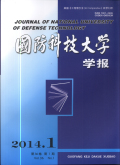国防科技大学学报2024,Vol.46Issue(1):87-92,6.DOI:10.11887/j.cn.202401009
卫星柔性热控薄膜材料充放电效应试验
Experimental on space charging and discharging effect of flexible thermal control films of satellite
摘要
Abstract
In view of the conductive/insulating multilayer composite structure and micro/nano-size thickness of flexible thermal control film materials,a test was conducted on the charging and discharging characteristics of kapton-based secondary surface mirror film materials using 10~70 KeV electron irradiation.The key parameters such as surface charging potential and electrostatic discharge frequency were obtained.The transport law of irradiated electrons in multilayer thin film materials was studied by Monte Carlo method.The results show that there is no electrostatic discharge when the irradiated electron energy is 10 KeV due to the particularity of the kapton-based secondary surface mirror film structure.With the continuous increase of the electron energy,the surface charging potential amplitude of the film material and the electrostatic discharge frequency show a trend of first increasing and then decreasing.The space charging and discharging effect is most significant when the electron energy is 25 KeV.关键词
kapton基二次表面镜/空间充放电效应/静电放电频次/表面充电电位Key words
kapton-based secondary surface mirror/space charging and discharging effect/electrostatic discharge frequency/surface charging potential引用本文复制引用
陈益峰,王金晓,冯娜,秦晓刚,杨生胜,季启政,韩炎晖,柳青..卫星柔性热控薄膜材料充放电效应试验[J].国防科技大学学报,2024,46(1):87-92,6.基金项目
国家部委基金资助项目(6142205200102) (6142205200102)

